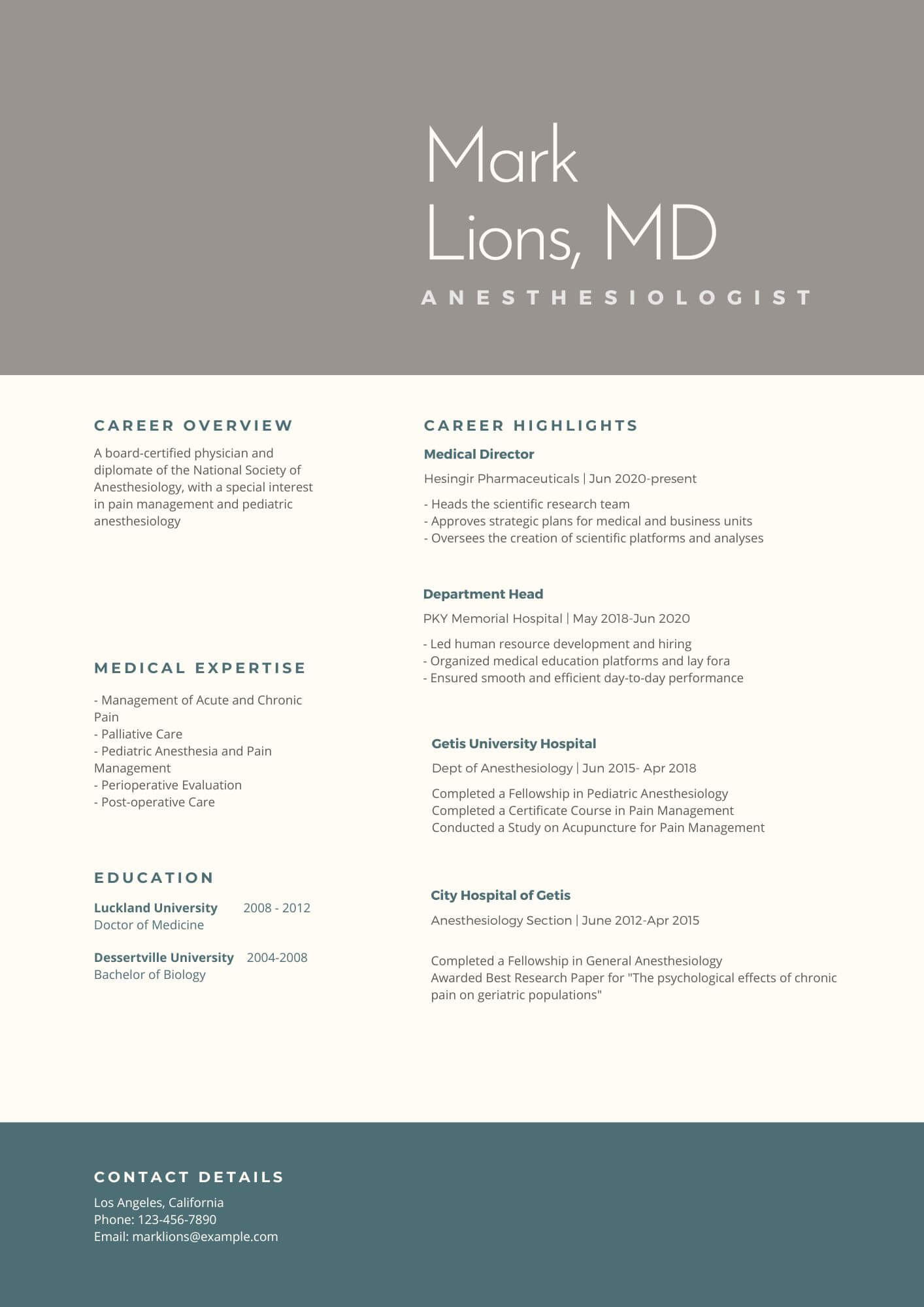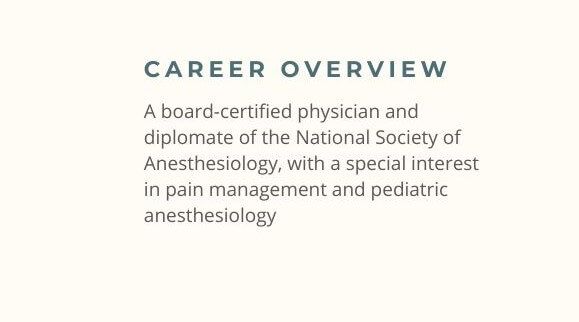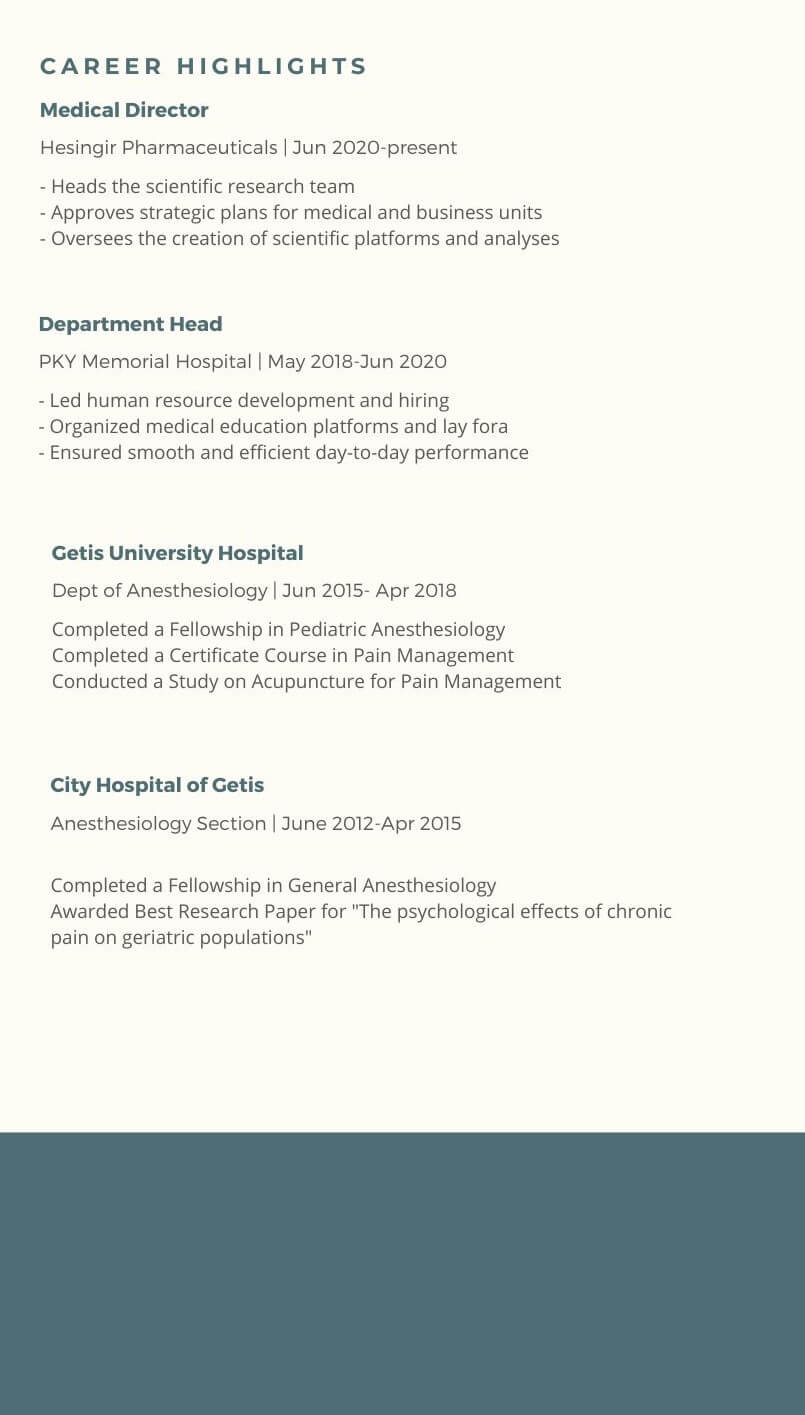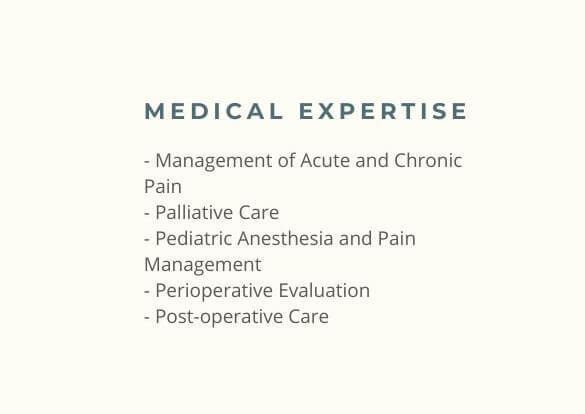Anesthesiologists are the backbone of a surgery team because they ensure that patients don’t feel a thing during surgery. Because of their importance, it is very important for hospitals to hire a qualified and certified anesthesiologist, which is where you come in. You send them a resume that wows them, and they just might give you a call. So, let’s count back from one hundred because we are going to be teaching you how to create the perfect resume for an anesthesiologist.
Or use our free resume builder to save time.
An example of an Anesthesiologist Resume

Contact Details
The hiring manager will want to be able to get in touch with you after they see your resume. Your contact details should be clearly visible. Include your phone number, email address, mailing address (just the city and state should be fine) and a link to a professional profile such as LinkedIn if you wish.
A good contact details section in a resume

Professional profile
A professional profile tells recruiters about your experience and goals and is the main factor in deciding whether to read your resume or not. In two or three sentences you have to convince recruiters that you are perfect for the job. Talk about your career and plans for the future. You can also mention areas you are specialized in that were highlighted in the job listing.
You should also avoid buzzwords by using the Cresuma buzzword finder to filter out the buzzwords in your resume.
A strong professional profile

Work Experience
The progression of your career is important to know that you have been properly trained. Recruiters like to see where you went for residency, and later career moves. This helps them to know whether you are the right fit for them.
You need to talk about your work experience in reverse-chronological order to show the path of your career. You also need to add your position, the hospital you worked at, how long you worked there by showing the range from the month/year that you started and the month/year that you left. You should also add a couple of bullet points highlighting key roles and achievements that you had.
Try to make your resume stronger by adding keywords that help your resume pass ATS- screening. Our keyword finder does the job for you.
How to add work experience to your resume

Education
Your education is obviously important. As an anesthesiologist, you have completed several years of schooling, so you don't need to start with your high school diploma. Work your way back from your latest degree up to your college degree.
You need to indicate how long you studied, the program that you studied and the university that granted you the degree.
Perfect example of an education section

Skills
Having your skills put on your resume is helpful. It helps the recruiter know if you are the one, they should hire for the role. Try to include a mix of hard and soft skills in this section.
The best example for a skills section

Other important sections
You can add other things that you think might make your resume stand out. Things like certifications, awards, affiliations and even languages could give you an edge over the other candidates.
And that's how you make a resume as an anesthesiologist. Now, check out our career guides page for more help on resume making or our resume samples for more ideas.

